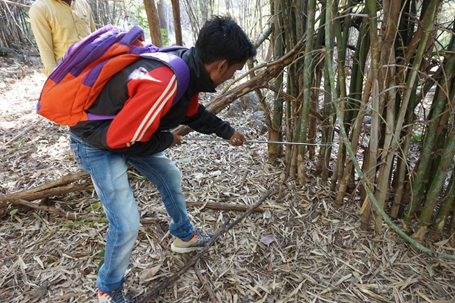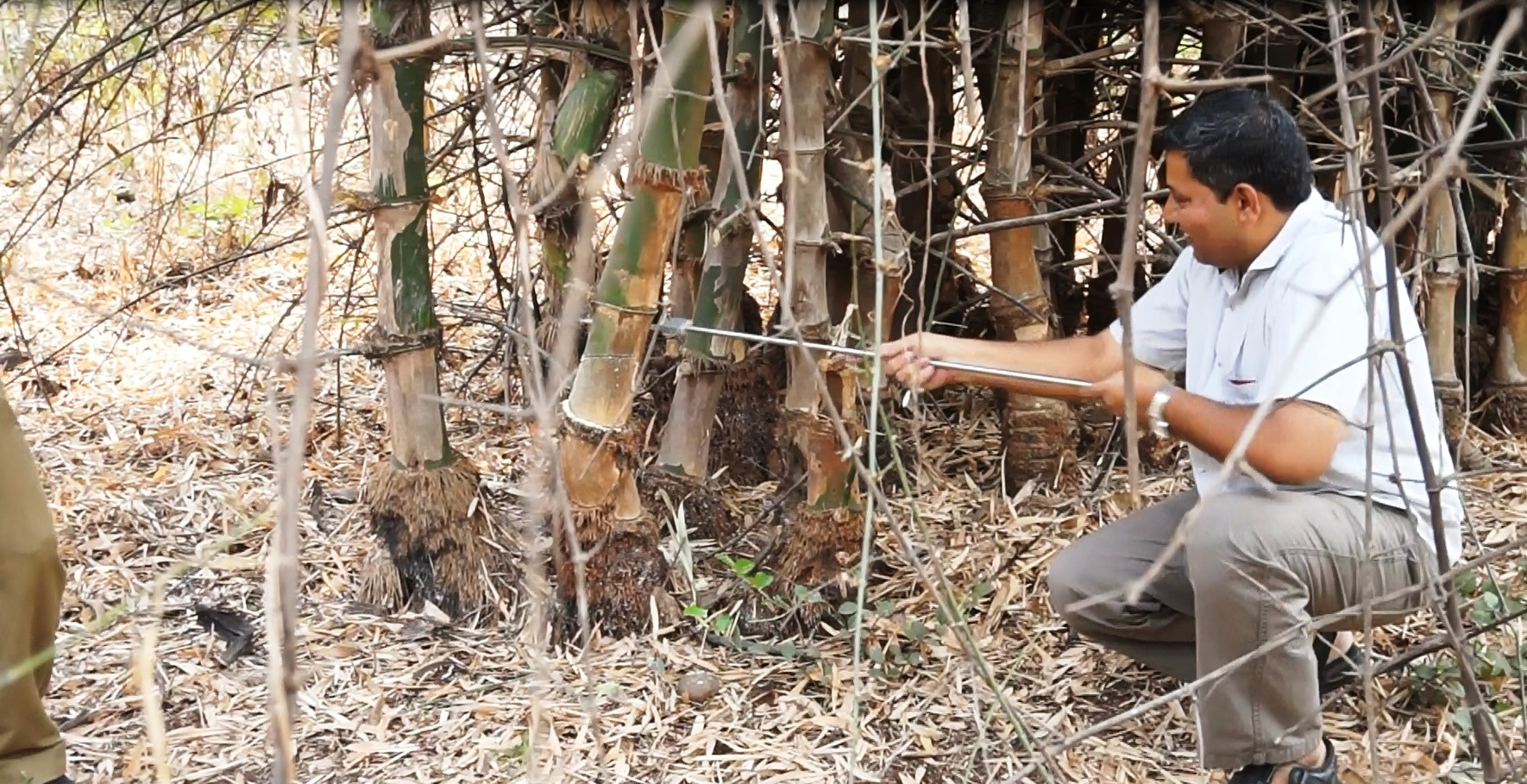

Bamboo grows in the form of cluster of bamboo culms. Most of the bamboo varieties grow completely within two years. In 2–5 years (depending on species), fungus begins to form on the outside of the Culm, which eventually penetrates and overcomes the Culm. Around 5 to 8 years later (species- and climate-dependent), the fungal growth causes the culm to collapse and decay. Hence individual bamboo, depending upon its condition needs to be harvested at particular age and selected bamboo has to be cut and removed from the cluster. Manually operated Bamboo Cutting tool has been developed, which is consists of a cutter, cutter holder and extension rod (of length ranging from 0.5 m to 2 m). The tool is able to cut selected bamboo from the culm, even if the approach to it is difficult.
Bamboo grows in the form of cluster of bamboo culms. Most of the bamboo varieties grow completely within two years. In 2–5 years (depending on species), fungus begins to form on the outside of the Culm, which eventually penetrates and overcomes the Culm. Around 5 to 8 years later (species- and climate-dependent), the fungal growth causes the culm to collapse and decay. Hence individual bamboo, depending upon its condition needs to be harvested at particular age and selected bamboo has to be cut and removed from the cluster. The tool consists of a cutter, cutter holder and extension rod (of length ranging from 0.5 m to 2 m). The tool is able to cut selected bamboo from the culm, even if the approach to it is difficult.
The tool consists of a cutter, cutter holder and extension rod (of length ranging from 0.5 m to 2 m). Initial trial was taken at BARC, Trombay and subsequently it was tested at Murbad forest range, Maharashtra. The tool is able to cut selected bamboo from the culm, even if the approach to it is difficult. After satisfactory trial, a set of tools was delivered to Murbad forest range office for their use. The technology of the tool is amenable for production as only easily available components are used for its fabrication.
Tool is operated manually and hence is useful in remote areas where electric power is not available. It does not need any maintenance.
The tool has been developed for bamboo cutting. So, the main application of the tools is for bamboo forest and horticulture departments.
Bamboo grows in the form of cluster of bamboo culms. Most of the bamboo varieties grow completely within two years. In 2-5 years (depending on species), fungus begins to form on the outside of the Culm, which eventually penetrates and overcomes the Culm. Around 5 to 8 years later (species- and climate-dependent), the fungal growth causes the culm to collapse and decay. Hence individual bamboo, depending upon its condition needs to be harvested at particular age and selected bamboo has to be cut and removed from the cluster. The tool consists of a cutter, cutter holder and extension rod (of length ranging from 0.5 m to 2 m). The tool is able to cut selected bamboo from the culm, even if the approach to it is difficult.
The tool consists of a cutter, cutter holder and extension rod (of length ranging from 0.5 m to 2 m). Initial trial was taken at BARC, Trombay and subsequently it was tested at Murbad forest range, Maharashtra. The tool is able to cut selected bamboo from the culm, even if the approach to it is difficult. After satisfactory trial, a set of tools was delivered to Murbad forest range office for their use. The technology of the tool is amenable for production as only easily available components are used for its fabrication.
Salient Features
The tool has been developed as a manually operated hand tool for selective cutting of bamboo, without affecting surrounding bamboos. The salient features of the tool are as:
Facilities Required
For the fabrication of the tool only one Conventional Milling Machine is sufficient. Also, the tool can be an additional product of the existing small scale industries.



